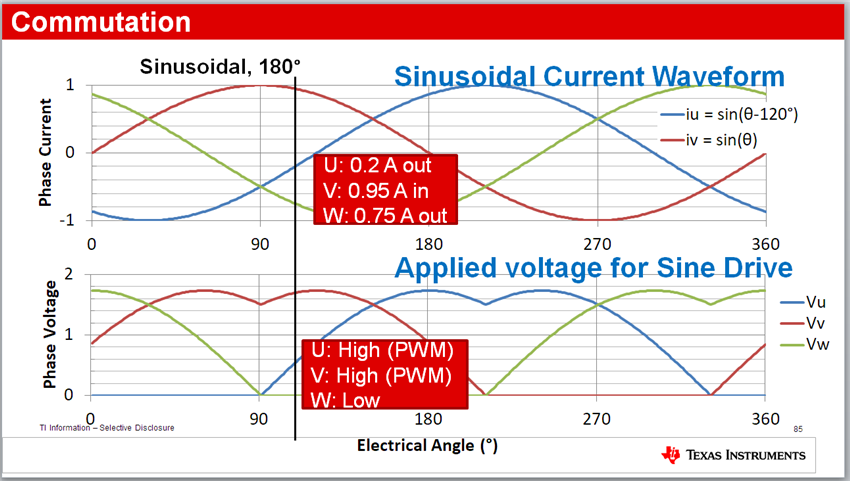Other Parts Discussed in Thread: TIDA-00281
Hi Cole and David,
Thank you very much for publishing the application report SLVA938A. It was well written.
I have a question on Equation 5 on calculating P_RDS. Could you please explain how the coefficient 1.5 come from?
Since R_DS(ON) in the equation is sum of RDS(on) for both the high-and low-side FETs, I believe R_DS(ON) per MOSFET is 1/2 of R_DS(ON) in the equation in most BLDC applications. Thus, P_RDS=3/4 *R_DS(ON) * (I_OUT_RMS)^2. Here R_DS(ON) is for each MOSFET. I am wondering whether 3/4 is the duty cycle of the MOSFET for sinusoidal control. Typically, the duty cycle of blocking commutation is 1/3 since only one phase is on each time for three-phase BLDC.
I believe I_OUT_RMS here is current per phase, which equal to I_IN/sqrt(3), where I_IN is the input current for the motor controller. Thus, P_RDS per MOSFET can be simplified as 1/4 * R_DS(ON) (per MOSFET) * (I_IN)^2. Is this correct?
Thanks and I look forward to hearing from you,
John



